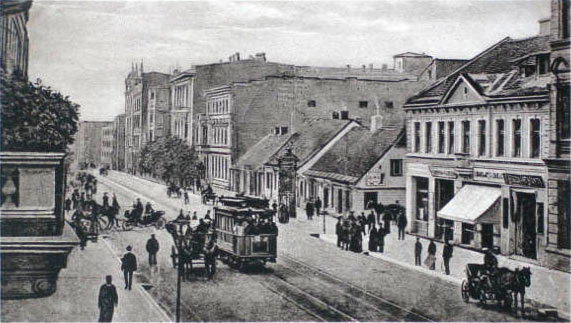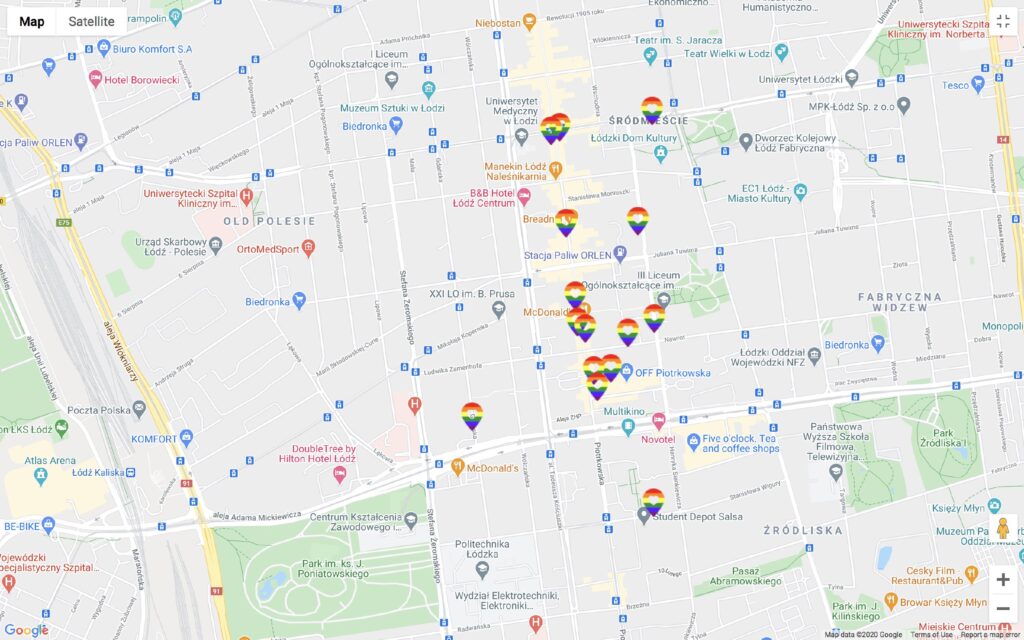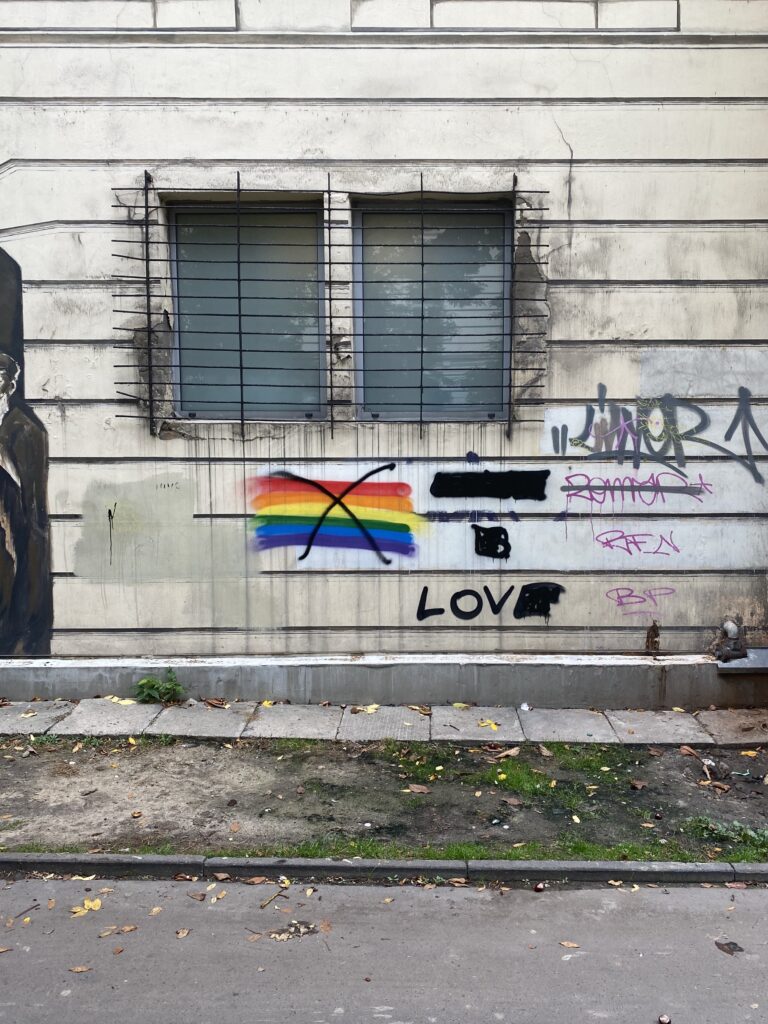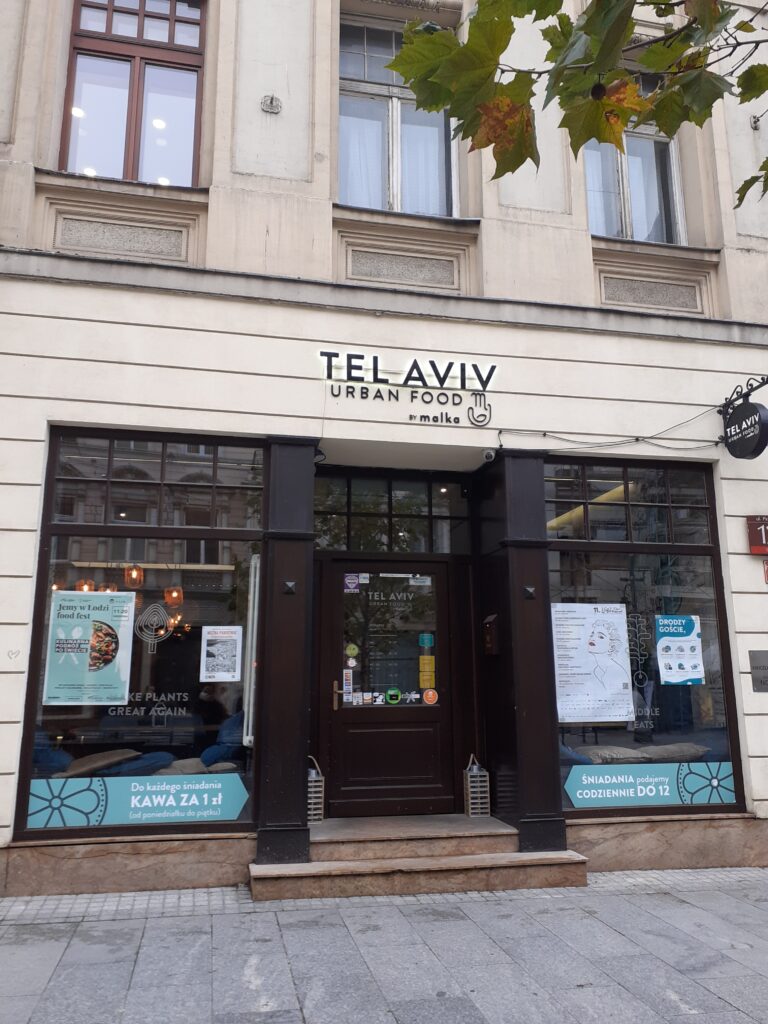LGBTQ+ Spaces in Piotrkowska Street, Łódź, Poland

Piotrkowska is a 4.2 kilometers pedestrian zone and the central street of Lodz that functions as a commercial center; a cultural and historical space of architectural landmark, art installations, creative activities, and event; a tourist attraction for both local and foreign travelers, and a political space with government buildings, and official celebrations, and protests occur in the street.
In 2019 several municipalities of Poland declared themselves as LGBT free zones. While this act has ongoing debates regarding its constitutional legalities, as a symbolic action, it has intensified homophobia and exclusivity of LGBT spaces and communities. Lodz is considered as one of the Red Zone areas according to the https://atlasnienawisci.pl.

While inclusivity and accessibility of LGBTQI+ spaces requires visibility of such spaces, this also brings problematic situations in increasing the physical visibility of identified LGBTQI+ spaces or establishments as it may present safety issues and harm the same spaces.
We set out to look for visible signs that would show a sense of accessibility, safety or friendliness on the street of Piotrkowska by looking at the exterior and interior of establishments. We embarked on this search, taking into account that the most used symbol that we could look for is the rainbow flag, which represents the movement of this large community.
We searched the addresses that we found online through https://gayplaces.pl and advertised in Google maps. Based on this online data, nine are in the main street of Piotrkowska while six are close to the parameters of this main street. On the other hand we kept our eyes open for other visible visual signs of inclusiveness in the area we delimited as our perimeter.

During our excursion, we traced, marked places, took pictures, and recorded audio on the spots that had some relevant data for our research. Comparing the online data with our on-site observation, we found that only two establishments had a visible sign of LGTBIQ+ friendliness with images of stickers and poster on the windows or door of a shop. Another important finding was the sighting of three graffiti on the walls of Piotrkowska Street of the rainbow flag with a black cross on top. One of the graffiti corresponds to the address of the Fabryka Równości, an equality factory-LGBT+ organization setup in Lodz. Other than that, we could not find two places that were advertised online.
It is also important to acknowledge that we are somehow outsiders to the culture mainly because we are foreign students and has language barriers. Our interpretation of the finding could be short-sighted, but we also wanted to address this issue exactly from this position, which others can share with us as international students, immigrants, or tourists in this city.
The majority of the establishment did not put up any visible sign or symbol of their LGTBIQ+ friendly policy or accessibility for people of the community. We question this fact taking into consideration the context of the city at this moment, where it has been declared as one of the LGTBIQ+ ideology-free zones. Perhaps the lack of visibility is a response to the possibility that advertisement may be a hazard to these places, making them a focus of some form of harassment from the supporters of this policy. In a way, online visibility seems to be more open and perhaps safer than the physical one.
It is difficult to assume the series of events connected with the graffiti. It is curious to know who or when it was painted, was the rainbow painted first, and then overlayed with the slash sign later. Still, these signs affect feelings of exclusivity and inclusivity in a public space.

If these identified LGBTIQ+ establishments start putting up obvious signage, it does not necessarily guarantee their visibility; rather, this physical visibility of signs also becomes problematic. How then can accessibility to LGBTIQ+ spaces are provided through increasing their visibility while considering the safety of such space?
If intervening in the physical dimension presents constraints, perhaps it can be intervened through a digital space. With our background on media arts and visual arts practice, a recommendation for increasing this visibility can be through Augmented Reality (AR) where a dynamic interaction may happen between the physical and augmented space, and the mobile device user or audience navigating these layers of spaces.
The AR station is in mock up stage, but it is inspired with concept of wall graffiti and digital vandalisms. Whether if this is the best digital solution to solve the visibility and accessibility of LGBTIQ+ spaces is yet to be researched further but creating creative and artistic solutions may create a dialogue thus contributing to a sense of visibility.
Credit by: authors, Software: ARpoise
“Augmented space provides a challenge and an opportunity for many architects to rethink their practice since architecture will have to take into account the fact that virtual layers of contextual information will overlay the built space. If we assume that the overlaying of different spaces is a conceptual problem that is not connected to any particular technology, we may start to think about which architects and artists have already been working on this problem”. Manovich, L. (2006). The poetics of urban media surfaces. First Monday. https://doi.org/10.5210/fm.v0i0.1545
Authors: Czarina Calinawagan, Julia Bande, Meraj Sharifi
Students of the Erasmus master program at DUK Media Art Cultures, currently at Łódź University.



